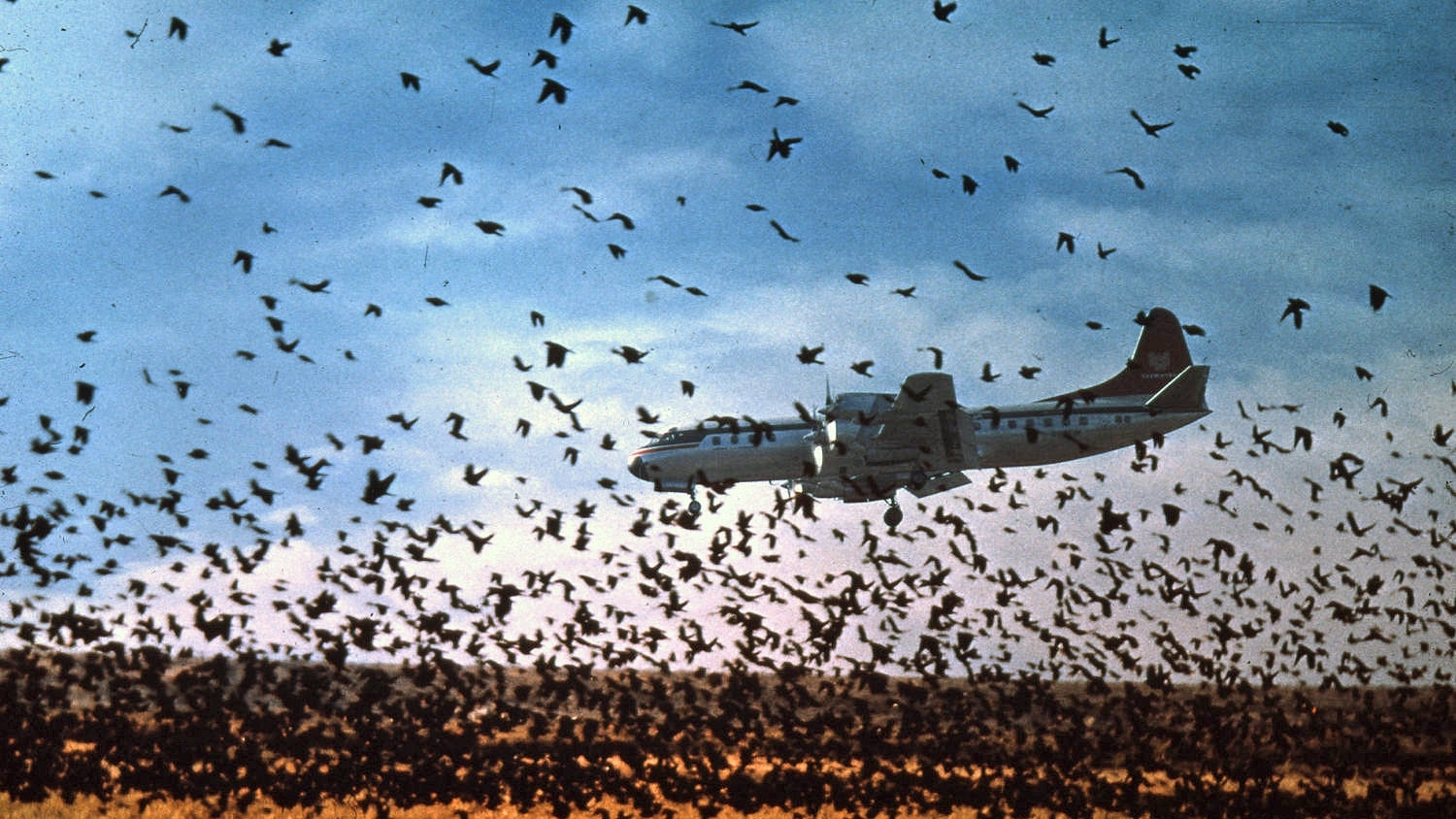NWRC Research Areas: Aviation Safety

Our scientists are working to understand and exploit wildlife behavior to mitigate wildlife collisions with aircraft, other vehicles, and structures.
Wildlife strikes with aircraft are an increasing threat to aviation in the U.S. and elsewhere, especially at higher altitudes, away from the airport environment. The number of wildlife strikes reported to the FAA has increased steadily from 1,759 in 1990 to 259,577 in 2021. Expanding wildlife populations, increases in number of aircraft movements, and a trend toward faster and quieter aircraft all have contributed to the observed increase in wildlife strikes. Concomitant with the increase in wildlife strikes has been greater emphasis on wildlife strike hazard/risk research as related to management on and near airfields. For the 34-year period (1990-2023), 296,613 strikes were reported of which 291,547 (98.3 percent) occurred in the USA.
Current approaches to reducing wildlife strikes with aircraft primarily fall under one or more of four categories:
- land cover/food resource management,
- wildlife dispersal, removal, and exclusion,
- detection/prediction of wildlife movements and behavior so that aircraft can avoid high-risk activities, both temporally and spatially, and
- the integration of sensory ecology (i.e., the relevant physiological mechanisms that contribute to anti-predator behavior) to understand animal reactions to vehicles, with the goal of developing onboard systems (e.g., lights, paint schemes, sounds) that elicit earlier alert and escape behaviors in response to vehicle approach.
A great deal of progress has been made in each of these areas in recent years, although key questions remain.
Project Goal and Objectives
Given these focus areas, and considering our collaborators (WS operations, FAA, Department of Defense, academic institutions), the objectives of the Ohio Field Station Project are to:
- Understand/quantify animal sensory ecology and antipredator behaviors to reduce animal-vehicle and structure collisions. Demonstrated Need: Collisions by wildlife species with aircraft, other vehicles, and structures present risks to human health and safety, property, and welfare of the species involved. We anticipate A) a better a understanding of how animals, particularly birds, detect and respond to approaching vehicles and objects, and how we can better exploit animal sensory ecology to enhance detection and avoidance responses, thereby reducing the frequency of collisions; B) development of a candidate aircraft lighting system to enhance avian detection of and response to aircraft approach (a component of the National Aviation Research Plan); and C) a better understanding of how animal sensory ecology and antipredator behaviors might be exploited to reduce animal use of target land covers and structures.
- Understand/quantify the role of sUAS relative to wildlife monitoring and hazing. Demonstrated Need: The FAA must understand the potential uses and problems associated with sUAS operated on and near airports; wildlife management is one of the uses considered and Task 2 under the current Interagency Agreement between the FAA and WS. We anticipate the development of A) guidance for the FAA and WS relative to the efficacy of sUAS airframes, sizes, speeds, numbers, and flight dynamics in hazing operations against select bird species over target land covers; and B) selection criteria and an associated ranking system for identifying suitable sUAS platforms and products that can be used to monitor (both in anecdotal and objective, bias-corrected survey applications) wildlife using on-and near-airport properties, and considering current use cases, current literature, target species, survey location, airport airspace use, FAA regulations, ease of use, availability, and cost.
- Understand/quantify airspace and land cover use on and near airports by birds recognized as hazardous to aviation safety, and relative to aircraft traffic and wildlife-aircraft strike risk. Demonstrated Need: Avian use of airspace and land covers on and near airports affects the risk of bird-aircraft collisions. We anticipate A) development of species-specific management plans based on movements of radio-tagged birds on and near airports; B) transition of seasonal land cover and altitude use data on and near airports, for select bird species, into bird-aircraft strike risk models; and C) development of management methods and tools to mitigate risk posed by these bird species.
Related Links
Aviation Safety (Publications)
Contact Us
Aviation Safety
Bradley Blackwell, Field Station and Project Leader
Phone: 419-625-0242
Ohio Field Station
6100 Columbus Ave.
Sandusky, OH 44870
Brian Washburn, Research Biologist
Morgan Drabik-Hamshare (Pfeiffer), Research Biologist
Dave Grayson, Wildlife Technician
Betsy Poggiali, Project Assistant
Bruce Buckingham, Wildlife Technician

